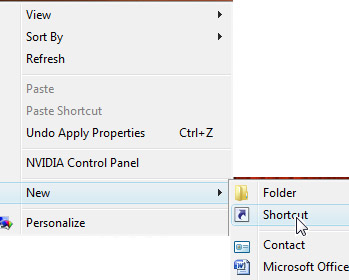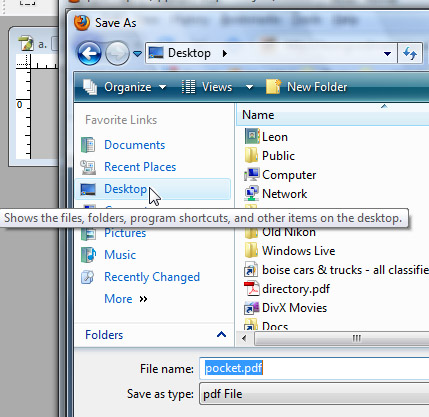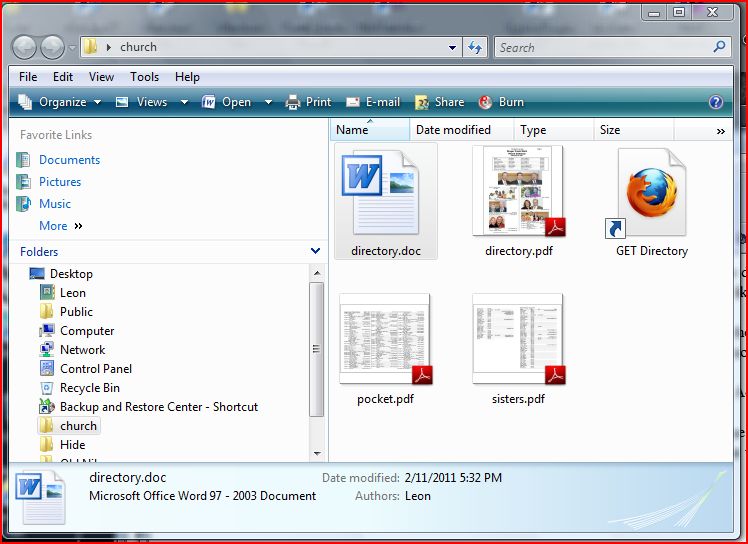Instructions on
how to organize
your directories on the desktop for fast access.
Step 1 allows to to return back to the web to get another directory.
You will create a shortcut so you will not have to launch your browser
and type in the address to the leongoodman.com/gc web site.

First
adjust this window to be half the width of your screen. Click the
"restore down" box in the upper right of the screen. Size and position
the smaller window at the right side to give room.
 Make sure
the desktop appears on the left of the screen. You may have to minimize
other applications to the bottom by clicking the "minimize" button on
each application.
Make sure
the desktop appears on the left of the screen. You may have to minimize
other applications to the bottom by clicking the "minimize" button on
each application.
Copy this text from the following line by highlighting the text between
the arrows keying Ctrl-c.
The URL text is case sensitive and must be lower case.
Copy
this
text --->http://www.leongoodman.com/gc/<---
Copy
this
text
Right click on the desktop where there is no icon and select
New and Shortcut.

When prompted to provide a location, paste the contents of the copy
buffer in the space provided using Ctrl-v.

When prompted for a name for the shortcut, type "Get directory".

It should look something like this if you have a Foxfire browser.

Your new shortcut can be moved to any convenient place on your desktop.
Copying
your
document to the Desktop
Step 2 is getting the file saved on your computer so you don't have
to download it when you need it next time.
Once you are viewing your document from Acrobat Reader or your Word
processor, you may save it to the desktop in the following manner.
The Acrobat Reader will be operating as a window within your browser.
If your browser were Acrobat Reader, you would click File and
then Save Page As..

Use the default file name but select the Desktop before saving.

 The
document
will look like this on your desktop. Move it to anyplace
convenient or drop it in a folder that you create such as "Church
stuff" to reduce clutter on your desktop. Acrobat makes an icon that
looks like the first page of the document.
The
document
will look like this on your desktop. Move it to anyplace
convenient or drop it in a folder that you create such as "Church
stuff" to reduce clutter on your desktop. Acrobat makes an icon that
looks like the first page of the document.
Now, any time you double click your file on the desktop Acrobat Reader
will open the previously saved file. Remember the date on the file and
use "Get directory" shortcut created above to check the most recently
loaded version of the file.
Microsoft Word and Open Office (swriter) work in a similar manner if
you are not using Adobe Acrobat.
All examples were given for Windows based products using the Foxfire
browser. Google Chrome and Internet Explorer work in a similar manner.
MAC users will have their version using the Command key instead of the
control key but will most likely be familiar with translating Windows
instructions into MAC language.
Step 3 is to keep your desk top orderly (optional).
Right click on the desktop and add a new folder. Give it the name
"church". If you already have documents saved on your desktop, drag
them to the new folder named "church". If you have not saved any files
to the desktop you may just save future directory files to the "church"
folder. New files will replace the old ones as needed. The advantage to
using a folder is that you can use larger icons by setting the default
view of the folder to whatever size you prefer. Mine look like this:

Call me if you hit a wall. Leon Goodman 672-9516. I am usually still
awake until 10pm.

 Make sure
the desktop appears on the left of the screen. You may have to minimize
other applications to the bottom by clicking the "minimize" button on
each application.
Make sure
the desktop appears on the left of the screen. You may have to minimize
other applications to the bottom by clicking the "minimize" button on
each application.





 The
document
will look like this on your desktop. Move it to anyplace
convenient or drop it in a folder that you create such as "Church
stuff" to reduce clutter on your desktop. Acrobat makes an icon that
looks like the first page of the document.
The
document
will look like this on your desktop. Move it to anyplace
convenient or drop it in a folder that you create such as "Church
stuff" to reduce clutter on your desktop. Acrobat makes an icon that
looks like the first page of the document.